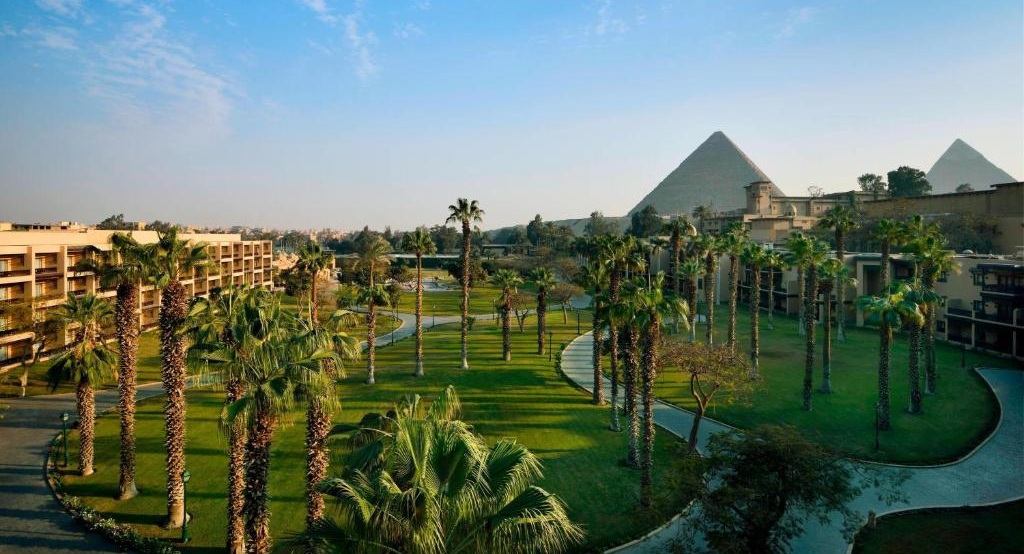Meat Rush: How Egypt is Stabilizing Supply and Price During Eid El-Adha
Updated 6/3/2025 8:00:00 AM
Egypt’s animal protein sector stands as a vital pillar of the nation’s food security and agricultural economy. For decades, it has been shaped by a complex interplay of traditional livestock farming, evolving consumer preferences, and fluctuating global market forces.
Today, this sector grapples with heightened pressures Egypt’s population surpasses 107 million people, increasing demand for meat while prices continue to rise. This weighs on the balance between domestic production capacity and the escalating consumption.
The situation becomes acute during peak consumption periods such as Eid El-Adha, when demand for meat products surges dramatically. Addressing these spikes strategically is critical to managing both supply and affordability. The sector’s ability to meet these demands while maintaining market stability is essential for consumer welfare and the sustainability of local producers.
Meeting Rising Demand for Meat Products During Eid El-Adha
Egypt's animal production sector faces the dual challenge of meeting consistent domestic demand while stabilizing market prices, especially during peak consumption periods like Eid El-Adha.
This holiday sees a surge in meat purchases, as Egyptians not only tend to purchase livestock for sacrifice but also buy meat from butchers to celebrate the Eid festivities.
Adel, a 50-year-old butcher, tells Arab Finance: “As Eid El-Adha approaches and prices soar, I have noticed that even Egyptians who cannot afford to sacrifice an animal this year are still keen on buying meat. They want their children to experience the spirit of Eid, despite the rising costs.”
Ahmed, a 35-year-old breadwinner who is not sacrificing this year, echoed this sentiment. He said he makes sure to buy a good quantity of meat products from more affordable sources like local butchers or the Ministry of Agriculture booths, instead of supermarkets.
In response, the Ministry of Agriculture consistently implements strategic measures to ensure adequate supply and affordability. For this year’s Eid al-Adha, the ministry played a significant role in market stabilization by supplying over 12,000 heads of locally raised livestock for sacrifice, including cattle, buffalo, sheep, and goats.
These animals were made available at reduced prices through an extensive network of farms across various governorates. Also, substantial quantities of live sacrificial animals and fresh local meats were distributed nationwide through the ministry's outlets and affiliated production sectors, often at prices up to 20% below market equivalents. This initiative aims to alleviate inflationary pressures and ensure broader access for consumers.
Beyond local production, strategic imports form a crucial component of the government’s supply strategy. In the lead-up to Eid, 149,380 tons of frozen meat were imported and released into the market at discounted prices.
Concurrently, 158,035 heads of live calves, 46,613 camels, and 16,579 sheep were also imported specifically for immediate slaughter and distribution. These significant import volumes underscore the need to supplement local output to meet the surging demand and help mitigate the financial burden on citizens during high-consumption periods.
This multi-pronged approach, integrating local supply with targeted imports, remains essential for maintaining market balance and ensuring national food security.
Sustainability Challenges in Local Meat Production
While Egyptians generally prefer locally produced meat, affordability often pushes them toward imported alternatives. “Egyptians prefer local meat products, but unfortunately, imported ones have a better price,” Adel says. This shift in consumer behavior is due to the ongoing challenges facing Egyptian livestock production.
One major issue is climate-related stress. “The current heat is really taking a toll on raising and keeping livestock. We are now trying to provide well-ventilated shaded areas and water to combat the heat,” Adel explains.
Meanwhile, Toka Mohamed, a livestock expert, states: “The rise in feed prices in Egypt negatively affects profitability and sustainability in red meat production. Feed accounts for about 60-70% of the total cost of raising calves and sheep. So, higher feed prices mean a significant increase in overall costs, which reduces profit margins for breeders.”
Mohamed adds, “As costs increase, breeders are forced to raise meat prices to compensate for their losses, which can reduce consumer purchasing power and lead to lower demand. Rising costs may drive some breeders to reduce their herd size or neglect proper feeding practices, which affects meat quality and growth efficiency.”
She also warns of increased competition from imports. “When local prices rise, competition with imported meat, which can be more affordable, increases, threatening the sustainability of local production.”
Driving Sustainable Livestock Production
To ensure sustainable production of livestock and meat products in Egypt, Mohamed emphasizes the importance of exploring cost-effective local feed alternatives, such as agricultural by-products, improving feed efficiency by reducing waste and enhancing nutritional composition, and investing in better breeds that more effectively convert feed into meat.
“Achieving a balance between the red meat consumption and importation has become a strategic necessity to ensure food security,” according to Mohamed. This balance relies on two main pillars: supporting and developing local production by improving breeds, providing adequate feed and vaccinations, and organizing imports to serve as a flexible tool for bridging supply gaps, particularly during high-demand seasons such as Ramadan and Eid El-Adha.
Additionally, Mohamed says, “Having a strategic reserve of frozen and chilled meat, as well as diversifying import sources, are effective strategies to control prices and protect consumers from market fluctuations.”
“True balance is achieved when local production becomes competitive, and imports serve as a supportive solution rather than a permanent alternative,” She points out. “This requires coordinated policies among the Ministry of Agriculture, the Ministry of Supply, and the General Authority for Veterinary Services.”
Egypt’s animal protein sector is at a pivotal moment, balancing the needs of a growing population against production challenges and market pressures. The surge in demand during peak seasons like Eid El-Adha highlights the critical need for a resilient and adaptive supply chain that ensures affordability and accessibility for all Egyptians.
By Sarah Samir
Related News









